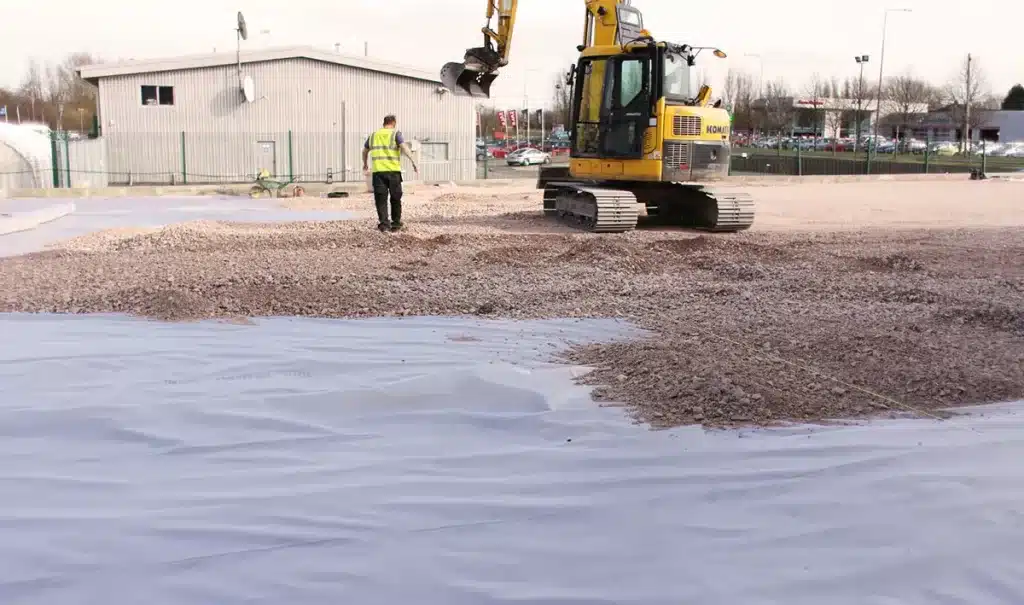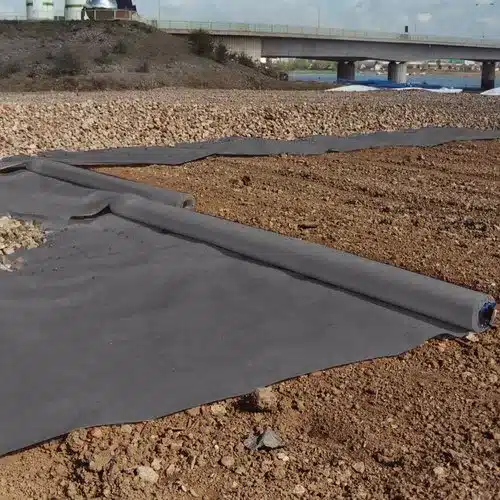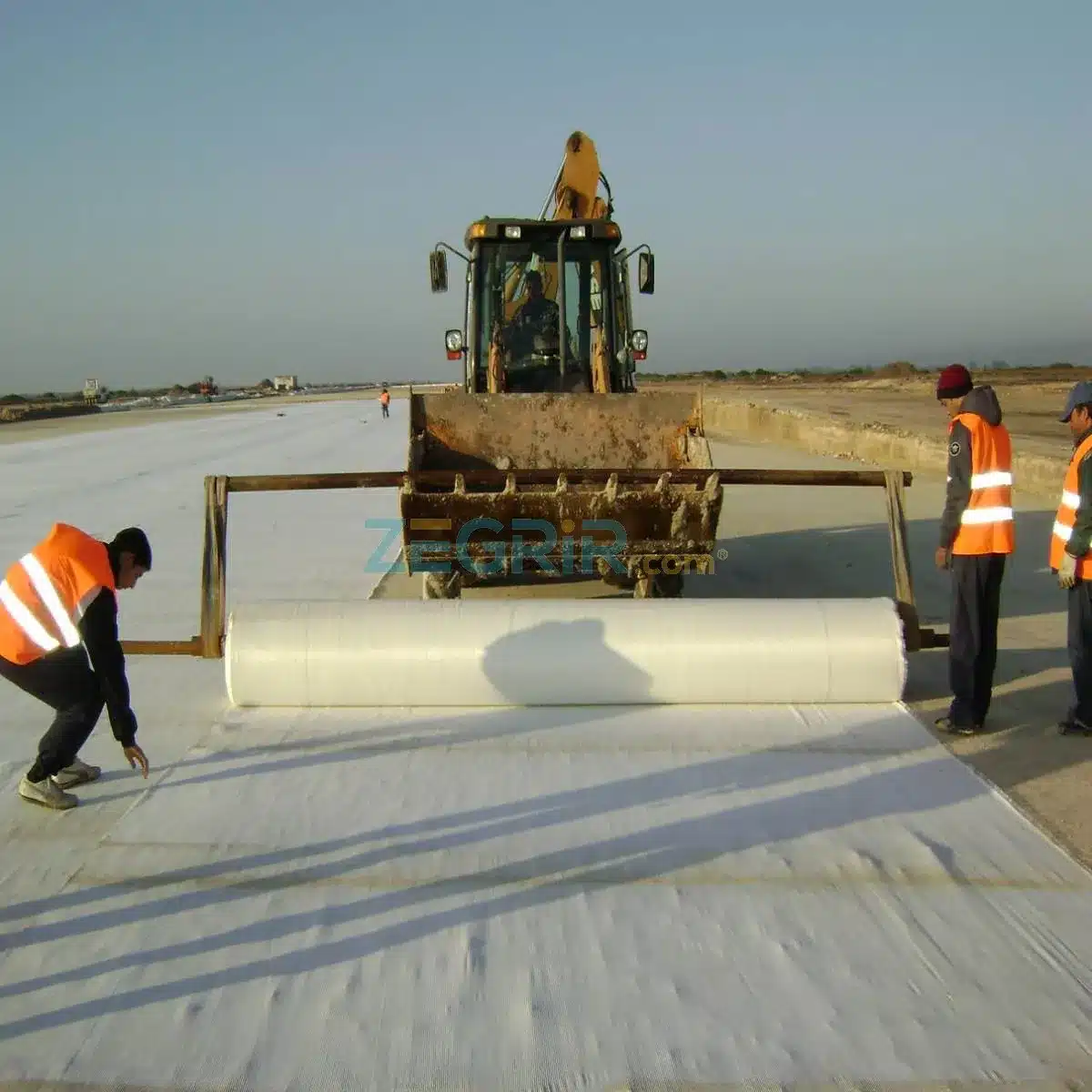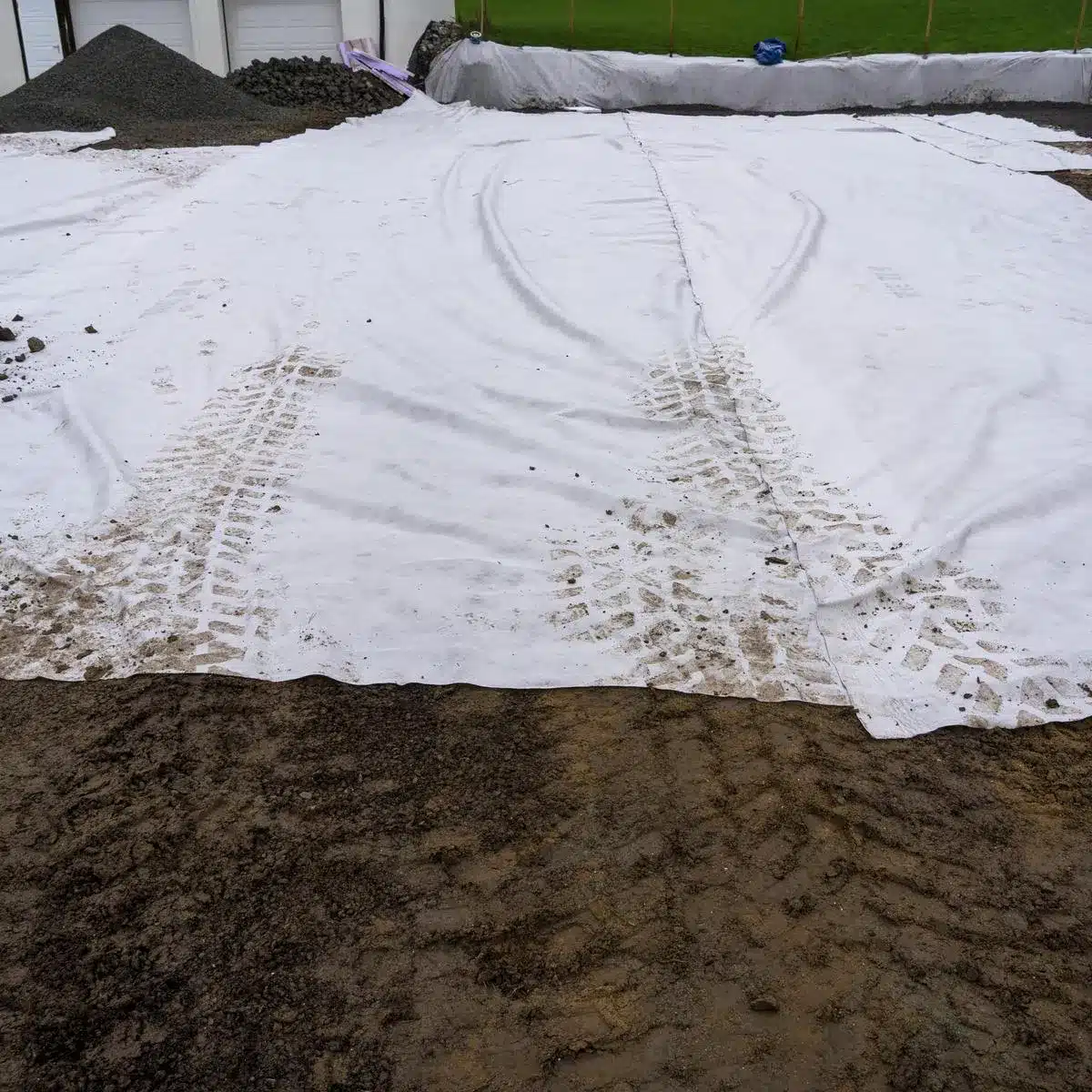+86-159 9860 6917
info@geofantex.com
geofantex@gmail.com
+86-400-8266163-44899
In the realm of cutting-edge construction solutions, “geotextile concrete pavement” emerges as a transformative force, reshaping the landscape of infrastructure durability. Geotextile concrete pavement combines the strength of traditional concrete with the reinforcing prowess of geotextile fabric, creating a resilient composite material that defies the limitations of conventional pavement design. This innovative approach not only enhances load distribution and prevents cracking but also extends the lifespan of road surfaces. As we delve into the multifaceted advantages of geotextile concrete pavement, it becomes evident that this fusion of materials is not just a construction technique; it’s a sustainable stride toward a future where infrastructure withstands the test of time with unmatched resilience. Explore the possibilities and benefits of geotextile concrete pavement, where strength meets innovation for infrastructure excellence.

What is geotextile in concrete?
Geotextile in concrete involves the integration of geosynthetic materials, particularly geotextiles, into the concrete mixture. Geotextiles are permeable fabrics made from synthetic fibers, possessing the ability to separate, filter, reinforce, protect, or drain when used in association with soil. This innovative approach aims to enhance the structural integrity and performance of concrete pavements. The incorporation of geotextiles into the concrete matrix not only improves tensile strength and durability but also offers versatile functionalities in soil-related applications. This makes it a favored option in contemporary pavement engineering.
What is the use of geotextile in pavement design?
The use of geotextile in pavement design serves a crucial role in enhancing the performance and longevity of road surfaces. Geotextile, a synthetic fabric with specific engineering properties, is a cost-effective way to ensure better drainage & stabilization of sub-grades, address various challenges, and improve overall durability.
Geotextile enhances pavement performance in various ways:
- Load Distribution: Geotextile evenly distributes external loads, like vehicular traffic, reducing stress concentration and minimizing the risk of cracks and structural damage.
- Crack Prevention: In pavement design, geotextile acts as a barrier, inhibiting crack formation and propagation by reinforcing concrete or asphalt layers, and maintaining long-term structural integrity.
- Soil Stabilization: Beneath the pavement, geotextile effectively stabilizes soil, preventing movement and settlement, especially in areas with expansive or weak soils, ensuring a stable foundation.
- Water Management: Geotextile acts as a water barrier, preventing infiltration into pavement layers. This safeguards against erosion, frost heave, and water-induced damage, contributing to the pavement’s long-term resilience.
- Increased Lifespan: Geotextile incorporation significantly extends the road surface lifespan by addressing common issues like cracking and structural deterioration, reducing maintenance needs, and providing a cost-effective solution.
- Reduced Rutting and Deformation: Geotextile reinforcement minimizes rutting and deformation caused by repetitive traffic loads, ensuring a stable, resistant, and safer road surface.

What is the Advantage of pavement design by using geotextile?
The advantages of incorporating geotextile in pavement design are substantial. Increased durability and resistance to cracking are primary benefits, extending the lifespan of the pavement significantly. Geotextile-reinforced pavements also exhibit enhanced load-bearing capacity, making them ideal for high-traffic areas. Moreover, the improved resistance to environmental factors such as freeze-thaw cycles and soil movement further cements geotextile’s role in sustainable pavement solutions.
What is geotextile fabric for the driveway?
Geotextile fabric in driveways is a specialized material designed, this fabric is typically made from synthetic polymers and comes in various forms, such as woven or non-woven, depending on the specific requirements of the driveway construction. Here’s an overview of the use and benefits of geotextile fabric for driveways:
- Soil Stabilization: Utilizing a high-strength and dimensionally stable woven fabric, geotextile fabric stabilizes the soil in driveway construction, preventing erosion and settling to establish a secure foundation that reduces gravel migration and provides protection against rutting.
- Load Distribution: This fabric evenly distributes vehicle loads on driveways, effectively minimizing rutting and deformation over time, thanks to its strength and stability.
- Weed Prevention: As a weed barrier, geotextile fabric, with its robust and stable woven structure, ensures a clean and attractive driveway appearance while thwarting weed growth.
- Water Management: With permeability that allows water passage and prevents soil erosion, this fabric plays a crucial role in managing runoff and maintaining driveway stability, enhancing its resilience against environmental factors.
- Prevention of Subgrade Mixing: In diverse soil areas, geotextile fabric, with its high strength and stability, prevents subgrade mixing, ensuring a consistent foundation and averting settlement issues.
- Enhanced Durability: Geotextile fabric significantly boosts driveway durability, minimizing the impact of external factors such as traffic, temperature fluctuations, and soil movement, leading to a longer lifespan and reduced repair needs.
- Easy Installation: Designed for efficiency, this fabric easily conforms to driveway shapes during installation, ensuring comprehensive coverage and effectiveness in reducing gravel migration and protecting against rutting.



Get Free Sample
We’ll respond as soon as possible(within 12 hours)






















